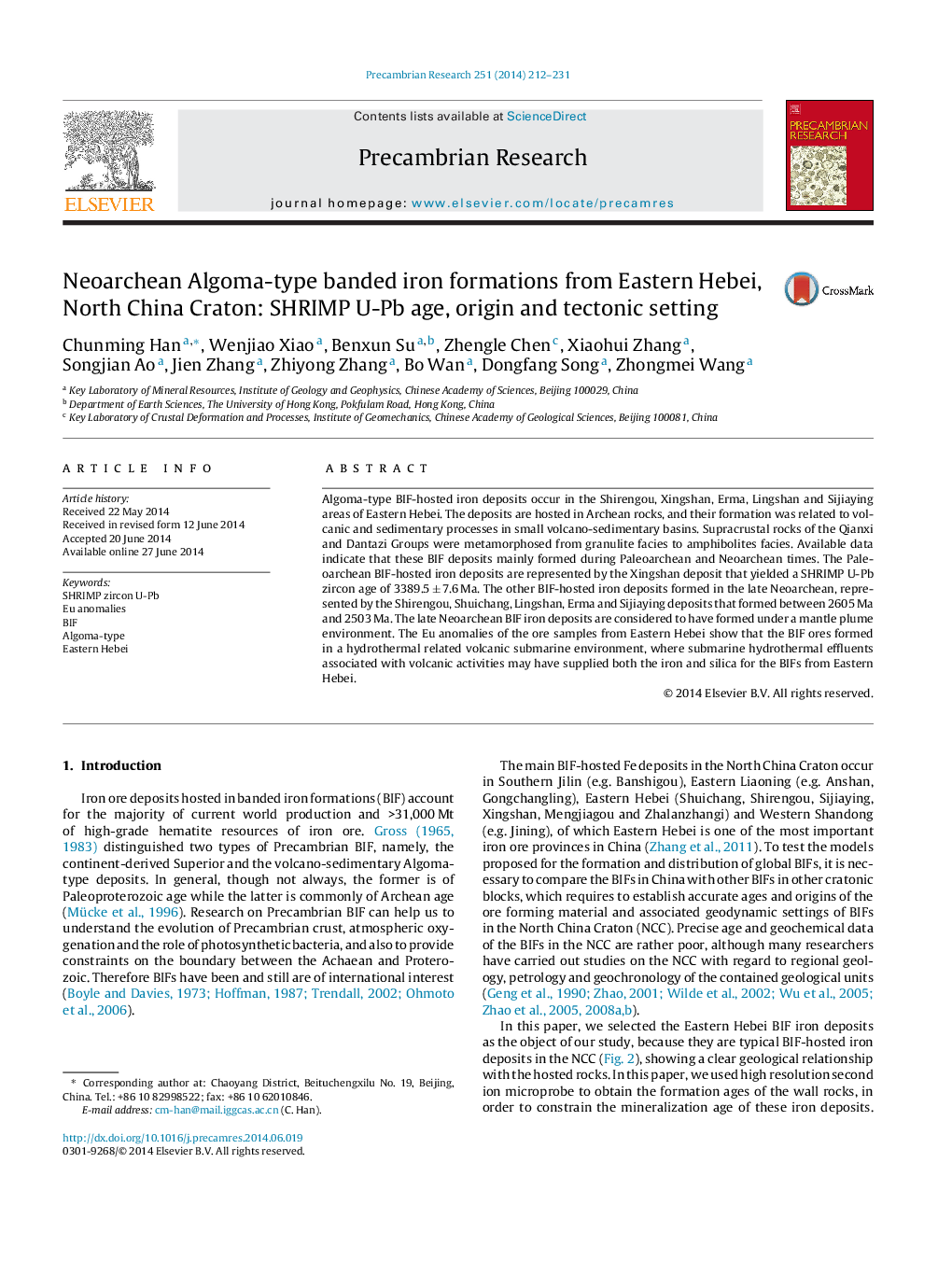| Article ID | Journal | Published Year | Pages | File Type |
|---|---|---|---|---|
| 4722896 | Precambrian Research | 2014 | 20 Pages |
•The BIF hosted iron deposits in Eastern Hebei formed between Paleoarchean and Neoarchean.•The Xingshan deposit that yielded a SHRIMP U-Pb zircon age of 3389.5 ± 7.6 Ma.•The other BIF-hosted iron deposits formed between 2605 Ma and 2503 Ma.•The late Neoarchean BIF iron deposits can be considered to form under a mantle plume environment.•The BIF ores formed in a hydrothermal related volcanic submarine environment.
Algoma-type BIF-hosted iron deposits occur in the Shirengou, Xingshan, Erma, Lingshan and Sijiaying areas of Eastern Hebei. The deposits are hosted in Archean rocks, and their formation was related to volcanic and sedimentary processes in small volcano-sedimentary basins. Supracrustal rocks of the Qianxi and Dantazi Groups were metamorphosed from granulite facies to amphibolites facies. Available data indicate that these BIF deposits mainly formed during Paleoarchean and Neoarchean times. The Paleoarchean BIF-hosted iron deposits are represented by the Xingshan deposit that yielded a SHRIMP U-Pb zircon age of 3389.5 ± 7.6 Ma. The other BIF-hosted iron deposits formed in the late Neoarchean, represented by the Shirengou, Shuichang, Lingshan, Erma and Sijiaying deposits that formed between 2605 Ma and 2503 Ma. The late Neoarchean BIF iron deposits are considered to have formed under a mantle plume environment. The Eu anomalies of the ore samples from Eastern Hebei show that the BIF ores formed in a hydrothermal related volcanic submarine environment, where submarine hydrothermal effluents associated with volcanic activities may have supplied both the iron and silica for the BIFs from Eastern Hebei.
